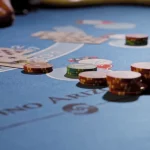Most hopper issues can be resolved easily. Hopper error codes are ambiguous and don’t give you specific information about the issue at hand. The problem must first be identified.
There are two distinct ways to connect a hopper: one involves running a cord from the hopper to the power supply, and the other involves connecting the hopper right away when it has been fully inserted into the game’s back.
You can cut the wire if it runs from your hopper to the power source or, depending on the Direct Web Slots (เว็บตรงสล็อต), from a connector on the hopper.
Simply wiggle the hopper slightly from left to right as you pull it. The hopper is attached by a track and may be challenging to shift. When pulling the hopper in your direction, you must depress a white clip that is located on the bottom front of some hoppers. A piece of plastic may be placed in front of the game’s hopper by some users. To lift the hopper over the plastic, simply drag it toward you.
If your hopper is connected to a power source by a wire, disconnect it from the power source or the hopper itself.
Remove the top of the Hopper
Hoppers are split into two halves and attached with screws or clips. The coins rest on the plastic at the top. The bottom portion houses the sensor, plug/connector, and wheel. The top part of the hopper can be removed.
Simply remove any screws that are fastened to your hopper using a Phillips screwdriver. There should be four screws—two on the interior of the hopper and two on the exterior of the coin area. Once the two screws have been taken out, the top will come off, and you will be holding the entire bottom section with the exposed wheel.
There are also hoppers with clips connecting the top and bottom. These clips are often yellow. The most common has two yellow clips in the front corners. Bring the clips up close.
Look for coins that have jams
Check the holes in the wheel itself and the area where the coins emerge from the hopper for any stuck coins. You will see them right away now that you can see the entire wheel area. Remove the obstruction, then manually test the wheel.
Lubricate the wheel
It should be simple to turn the hopper wheel in a clockwise way. If there are no coins stuck in the mechanism, try spinning the wheel. If the flow seems constricted, exhibits rust, etc., repeat the inspection for obstructions. Clean the wheel, the region, and any other locations. It might need a quick spray of silicone; use a modest amount and stay away from Slot Jackpot (สล็อตแตกง่าย). It only takes a quick spray. Turn the wheel for a bit to allow the lubricant to work.
Clean the Sensor
If the wheel is turning freely and there are no obstructions evident, have a look at the area where the coins are distributed from the hopper. When you flip the hopper over, an arm with a spring loaded is present. This arm swings past a sensor as a token is given out, shattering the light and signaling to the gadget that a token has been given out. Clean the sensor completely of any dust and debris using a Q-tip and some rubbing alcohol.
Lubricate the sensor arm and spring
The spring-loaded arm that disengages the sensor can sometimes seize up due to rust or dirt. The springs and the arm itself should be sprayed with a tiny amount of silicone spray. Move the arm manually for a bit to massage the lubricant into the arm and the spring. You can feel it getting looser as you move it forward and the spring begins to pull the arm back. When it slides effortlessly and the spring pulls it back into place right away, you’re done.
Manually test the hopper
Coins should be placed in the wheel, which should then be turned clockwise. As you watch, the tokens will fall into the wheel’s holes and move in the direction of the payout chute. If everything is lubricated and cleaned, you can see the tokens shot out of the hopper and into the payout chute one at a time.
Clean the wheel again and check for obstructions if it is challenging to turn. If coins are dropping out of the payout chute instead of being fired out, clean and lubricate the spring-loaded arm. Verify that the arm immediately repositions itself after passing through the sensor to ensure that it is not hitting the sensor but rather going THROUGH it and shattering the beam rather than impacting it.












